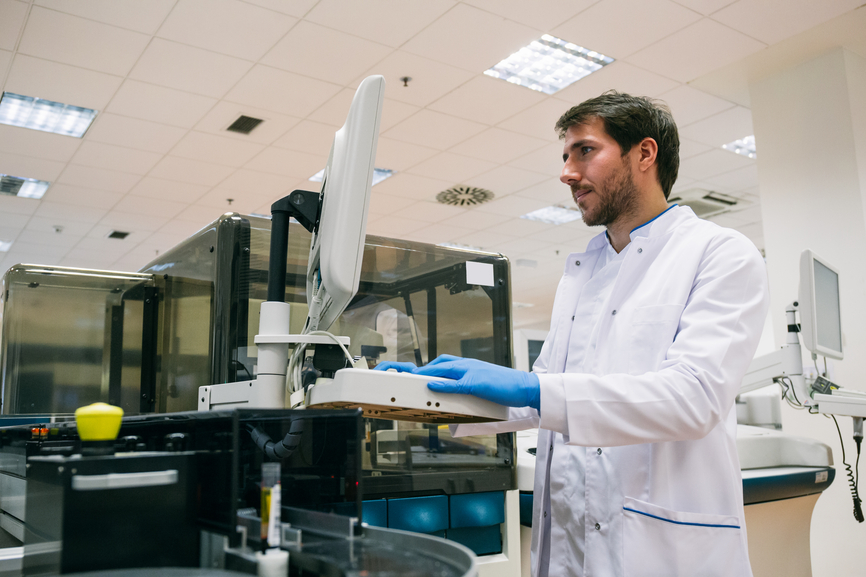All NGS clinical diagnostic laboratories want to run more efficiently—it’s a necessity if they want to remain competitive. They need to streamline laboratory workflows, save on labor costs, and scale their operations to meet demand, such as with the current calls for additional COVID-19 testing capacity. But it goes further than that. To keep their highly skilled employees engaged and reduce human error, they need to minimize both unnecessary duplicated effort and simple repetitive tasks.
System integrations can help labs address all of these issues. By bridging the gap between two or more self-sufficient, self-contained systems, they enable the reliable and efficient exchange of information. This helps labs improve their performance and productivity, and scale beyond what would be possible using manual processes.
NGS labs use three main types of integrations:
1. Instrument Integrations

This first type of lab integration is used to connect analytical instruments—liquid handlers such as the Hamilton STAR, sequencers such as the Illumina NovaSeq, and QC instruments such as the Molecular Devices SpectraMax and Agilent TapeStation—with software, particularly laboratory information management systems (LIMS).
The most common instrument integrations are file-based with the LIMS producing a file with instructions for the instrument to read or the instrument producing a results file that is read back into the LIMS and used as a basis for further actions. Less common, but perhaps more valuable, API-based instrument integrations transfer data and results directly to the LIMS via an application programming interface (API). Other instrument integrations exchange data via HL7, which adheres to the HL7 international framework and standards. All of these integrations allow quantitative data to be transferred directly from analytical instruments to the LIMS. That means labs can avoid moving data manually, either via a USB thumb drive or manual data entry, reducing both human effort and the potential for error.
2. EMR/EHR Integrations
Another form of lab integration involves connecting electronic medical records (EMR) or electronic health records (EHR) to the LIMS. Today, most of these integrations adhere to the HL7 standard to ensure that data is passed between systems in a common format. The Fast Healthcare Interoperability Resources (FHIR) Specification is a more modern, web-based standard that builds on existing HL7 standards. The adoption of FHIR is proceeding slowly and carefully as it generally involves modifying complex critical infrastructure.
When these integrations are implemented, the tests doctors order can be sent directly to the lab, making it easier for them to access the lab’s services. Doctors can also retrieve the test results directly. For labs, these integrations mean they can be more responsive to healthcare providers and offer faster turnaround times.
3. Enterprise Software Integrations
Enterprise software integrations connect the LIMS to other laboratory and business software, including order management, billing, inventory management, freezer management, post-sequencing analysis, and clinical interpretation and reporting systems. For instance, an integration that connects the LIMS to a billing system could be used to automatically send data to a third-party, such as an insurance carrier, for payment approval. Typically these integrations use APIs to share information between systems.
The key importance of these integrations is that they reduce the unnecessary duplication of data. They also enable administrative tasks, including payments, to be completed more efficiently.
Integrations Present Unique Challenges
Few integrations are available “out-of-the-box,” which means a custom solution is needed for each one based on the unique challenges they present. While it might be possible for some labs to do this work themselves, for most, it’s beyond the skillset and focus of the staff. Integrations built without taking engineering best practices into account can be fragile and inefficient—becoming a liability to the business and the opposite of what labs are trying to achieve.
Integrations really are essential for any lab that wants to make their processes as robust, scalable, secure, and error-free as possible. Making an early investment in working with a knowledgeable consultant to implement integrations will save time and money in the long run.
In our next post, we’ll discuss the technical challenges integrations present and why your lab might not want to take these on alone.
Contact us to discuss how integrating your laboratory software systems could help you boost productivity and efficiency.

